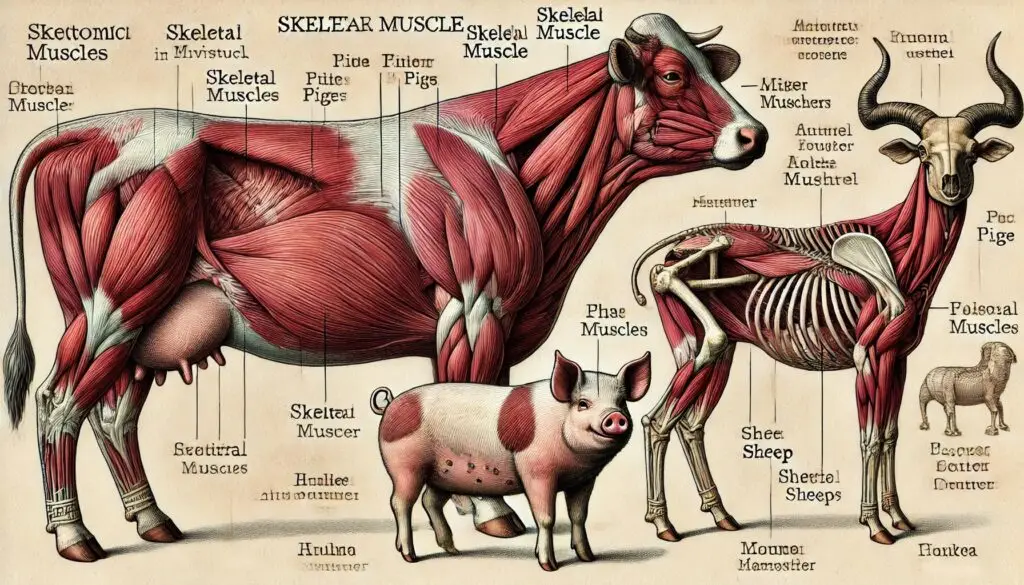Creatine Kinase levels in Animals

Creatine Kinase (CK) is a crucial enzyme found primarily in muscle tissues, and it plays an important role in energy production. When muscle cells are damaged, CK leaks into the bloodstream, causing elevated CK levels. Veterinarians use these elevated levels as an indicator of muscle injury or muscle-related diseases in animals.
What is Creatine Kinase (CK)?
Creatine Kinase (CK) is a type of enzyme that helps produce energy in muscle cells. It’s found in tissues like skeletal muscle, heart muscle, and the brain. CK plays a significant role in the energy transfer process during muscle contractions. However, when muscle cells are damaged, CK is released into the bloodstream, leading to elevated CK levels.
For more details on the role of CK in animals, visit this detailed guide on CK.
Why Elevated CK Levels Matter in Animals
High levels of CK in blood samples can be a clear signal of muscle damage or muscle degeneration in animals. This increase is particularly common after intense physical activity or in cases of muscle trauma. However, sustained elevated CK levels may point to underlying health conditions that require veterinary intervention.
Causes of Elevated CK Levels in Animals
There are many reasons why an animal might show high CK levels. Common causes include:
- Muscle Injury: Physical trauma, such as accidents or muscle strains, can lead to muscle fiber damage, resulting in an increase in CK levels.
- Intense Exercise: Excessive physical activity can cause temporary muscle damage, which may raise CK levels.
- Neuromuscular Disorders: Diseases like muscular dystrophy and other genetic muscle conditions are often accompanied by elevated CK levels.
For more information on muscle injuries and CK, check this source on muscle damage.
Neuromuscular Disorders and Elevated CK Levels
Neuromuscular disorders are conditions that affect the muscles and the nerves controlling them. These diseases often lead to muscle weakness and wasting. Creatine Kinase levels are commonly elevated in animals suffering from neuromuscular conditions. Muscular dystrophy, in particular, is one such disease where CK levels can serve as a diagnostic tool.
Muscular Dystrophy in Animals
Muscular dystrophy is a genetic condition that results in progressive muscle degeneration. As muscle fibers break down, CK is released into the bloodstream, causing a noticeable increase in its levels. This condition is often detected in young animals and can be quite severe.
It’s important for veterinarians to monitor CK levels and assess other clinical signs when diagnosing muscular dystrophy. For a more in-depth look at muscular dystrophy, explore this link.
Diagnosing Neuromuscular Disorders with CK Levels
When diagnosing neuromuscular disorders, elevated CK levels are often the first step in identifying the condition. However, CK levels alone are not enough. Veterinarians will also perform muscle biopsies, electromyography (EMG), and genetic tests to confirm the diagnosis.
Diagnosing Neuromuscular Disorders with CK and Biopsies
Although elevated CK is a helpful sign, it is not the only test used for diagnosis. A muscle biopsy, which involves taking a small sample of muscle tissue for examination, is often performed to look for structural changes. Genetic testing is also used to identify conditions like muscular dystrophy.
Treatment Options for Elevated CK Levels
Treating elevated CK levels involves addressing the underlying cause of the muscle damage. If the cause is trauma or excessive exercise, rest and recovery can help lower CK levels. For more chronic conditions like muscular dystrophy, there may be no cure, but treatments can help manage symptoms and improve the animal’s quality of life.
For more on treatment options for neuromuscular diseases in animals, refer to this source on treatment strategies.
Signs and Symptoms of Muscle Damage in Animals
Veterinarians rely on more than just blood tests to determine if an animal is suffering from muscle damage. They look for specific symptoms that indicate muscle injury or neuromuscular disorders.
Symptoms of Muscle Damage
- Limping or Lameness: A sign that the animal may be favoring a limb due to muscle pain.
- Muscle Weakness: Reduced ability to move or weakness in one or more limbs.
- Swelling: Muscle swelling from injury or inflammation.
- Pain or Tenderness: Sensitivity to touch or signs of discomfort when the muscle area is palpated.
Assessing Muscle Damage and CK
If any of these symptoms are present, your veterinarian will likely request a blood test to check CK levels. It is essential to follow through with further diagnostic tests to ensure an accurate diagnosis.
Prevention and Care for Animals with Elevated CK Levels
While some causes of elevated CK are unavoidable, there are steps you can take to reduce the risk of muscle damage in animals.
Preventive Measures
- Avoid Excessive Exercise: Gradually increase exercise intensity to prevent muscle strains.
- Proper Nutrition: Ensure your animal is on a balanced diet that supports muscle health.
- Routine Veterinary Care: Regular check-ups can help identify potential muscle problems early.
For more on animal care and prevention strategies, visit this preventive care guide.
Final Thoughts
Creatine Kinase levels are an essential diagnostic tool in veterinary medicine, particularly when evaluating muscle damage or neuromuscular disorders like muscular dystrophy. Understanding the causes and significance of elevated CK can help veterinarians diagnose these conditions early, leading to better treatment outcomes for animals.
By monitoring CK levels and recognizing the signs of muscle damage, you can provide the best care for your animals.
More From Animal Diseases:
Stroke in Animals






Responses